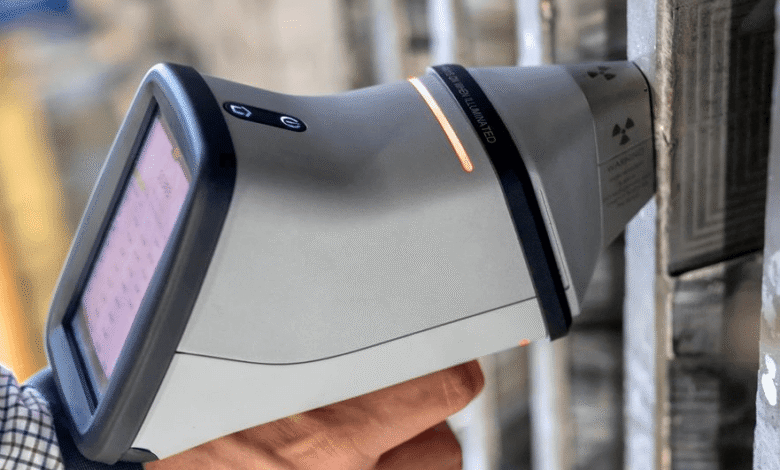Understanding the Power of the X Ray Fluorescence Spectrometer in Modern Elemental Analysis

In the fast-paced world of scientific research and industrial applications, precision and speed are crucial. Whether it’s verifying the composition of a metal alloy or detecting contaminants in soil, the need for accurate elemental analysis tools has never been more essential. One such game-changing instrument is the x ray fluorescence spectrometer, a non-destructive, rapid, and highly sensitive device used across a wide range of industries.
In this comprehensive guide, we explore the core functionality, applications, benefits, and technological advancements of the x ray fluorescence spectrometer and why it has become a cornerstone in materials analysis today.
What Is an X Ray Fluorescence Spectrometer?
An x ray fluorescence spectrometer, commonly referred to as an XRF spectrometer, is an analytical instrument that determines the elemental composition of a sample by measuring the secondary X-rays emitted when the sample is excited by a primary X-ray source.
This method is based on the principle of X-ray fluorescence, a physical phenomenon where atoms emit characteristic “fluorescent” X-rays upon excitation. Since each element has a unique X-ray emission signature, the spectrometer can accurately identify and quantify the elements present in a sample.
How Does It Work?
The working principle of the x ray fluorescence spectrometer involves three key steps:
- Excitation: The sample is bombarded with high-energy X-rays, typically from an X-ray tube or a radioactive source.
- Fluorescence: Atoms in the sample absorb this energy, causing the ejection of inner-shell electrons. As electrons from higher energy levels fill the void, the atom emits secondary X-rays.
- Detection and Analysis: These secondary X-rays are detected and analyzed by the spectrometer’s sensors, which determine the energy levels and intensity of the X-rays to identify and quantify each element.
Modern instruments are equipped with solid-state detectors and sophisticated software algorithms that enable high-speed and high-resolution analysis with minimal user input.
See also: Global Floor Cleaning Traditions and Cultural Practices
Types of X Ray Fluorescence Spectrometers
1. Benchtop XRF Spectrometers
These are stationary, high-precision instruments often found in laboratories. They provide greater sensitivity and can analyze lighter elements like sodium or magnesium more effectively.
2. Handheld XRF Analyzers
Compact and battery-powered, these are designed for field applications like mining, scrap sorting, and environmental inspections. While slightly less sensitive than benchtop models, they are incredibly useful for on-site decisions.
3. Wavelength Dispersive XRF (WDXRF)
WDXRF separates the emitted X-rays using diffraction before detection, resulting in higher resolution and better accuracy.
4. Energy Dispersive XRF (EDXRF)
EDXRF analyzes all emitted X-rays simultaneously, making it faster and more suited for general screening and process control.
Applications Across Industries
The x ray fluorescence spectrometer is used in a wide range of sectors due to its speed, accuracy, and versatility. Some key applications include:
✅ Mining and Geology
XRF is used for on-site mineral analysis, ore grade control, and geochemical mapping. This helps geologists and mining companies make quick, informed decisions.
✅ Metal and Alloy Identification
Manufacturers use XRF to confirm the composition of incoming metals, check for proper alloy mixtures, and ensure quality control in final products.
✅ Environmental Testing
The instrument is ideal for detecting heavy metals in soil, sediment, water, and even air particulates, making it an essential tool for environmental monitoring.
✅ Cement and Building Materials
XRF is employed to analyze raw materials and finished products like cement, gypsum, and clays to ensure consistency and adherence to industry standards.
✅ Food and Agriculture
The technology can be used to detect nutrient levels or contaminants like lead or cadmium in food samples, fertilizers, or soil.
✅ Archaeology and Art Conservation
Because of its non-destructive nature, XRF is valuable for analyzing historical artifacts, artworks, and manuscripts to identify pigments, materials, and origins.
Advantages of Using an X Ray Fluorescence Spectrometer
🕒 Rapid Results
One of the most significant advantages is the speed of analysis. Results can be obtained in under a minute, making it suitable for high-throughput testing environments.
🔬 Non-Destructive Testing
Samples remain intact, which is critical for valuable or limited samples such as archaeological artifacts or museum pieces.
💻 Ease of Use
Modern x ray fluorescence spectrometer systems come with intuitive interfaces, automated calibration routines, and built-in libraries, making them user-friendly even for non-experts.
🔄 Minimal Sample Preparation
Unlike some other techniques, most samples require little to no preparation, saving time and reducing costs.
🧪 High Accuracy
The precision of XRF measurements makes it suitable for both qualitative and quantitative analysis, even for trace elements in complex matrices.
Limitations to Consider
While highly effective, there are some limitations to the x ray fluorescence spectrometer:
- Detection of Light Elements: Elements lighter than sodium (e.g., carbon, nitrogen, oxygen) are difficult to detect accurately.
- Matrix Effects: The surrounding elements in a sample can affect the accuracy of results, requiring proper calibration.
- Depth of Penetration: The X-rays only penetrate a few micrometers into the sample, so surface contamination can influence results.
Despite these limitations, XRF remains one of the most practical and widely-used elemental analysis tools available.
How to Choose the Right X Ray Fluorescence Spectrometer
Selecting the best spectrometer depends on the application, required sensitivity, and operating environment. Here are a few factors to consider:
- Element Range: Ensure the spectrometer covers the elements of interest.
- Portability: If field analysis is required, a handheld model is ideal.
- Sensitivity: For trace-level detection, benchtop models with WDXRF technology offer higher sensitivity.
- Software and Connectivity: Choose a model with modern data management features like Wi-Fi, Bluetooth, and cloud integration.
- Support and Service: Opt for a supplier that provides training, after-sales service, and calibration support.
Leading Brands in XRF Technology
Several reputable brands manufacture x ray fluorescence spectrometer systems, including:
- Thermo Fisher Scientific
- Bruker
- Olympus
- Hitachi High-Tech
- Malvern Panalytical
- Drawell Scientific
Among these, Drawell is gaining popularity for offering high-quality instruments at competitive prices, making XRF technology more accessible to laboratories in emerging markets.
Maintenance Tips
To keep your spectrometer performing at its best:
- Calibrate regularly using certified reference materials.
- Clean the detector window to avoid residue interference.
- Store the unit in a dry, stable environment.
- Train personnel on safety and best operating practices.
- Perform software updates as recommended by the manufacturer.
Conclusion
The X ray fluorescence spectrometer is a vital tool for scientists, engineers, and analysts who need fast, non-destructive, and accurate elemental analysis. Its broad range of applications, combined with user-friendly design and cutting-edge technology, makes it an indispensable asset across numerous industries.
Whether you’re monitoring heavy metals in soil, verifying alloy compositions, or conserving historical artifacts, investing in a reliable XRF spectrometer ensures you have the power of precision right at your fingertips. As industries continue to embrace data-driven decision-making, the importance of this instrument will only grow, solidifying its role as a cornerstone of modern analytical science.





